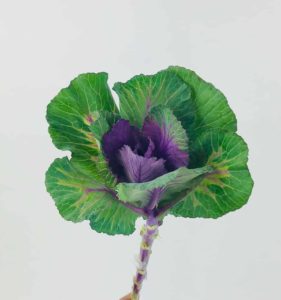
The Hardiest Winter Plants & Flowers by Region
While it may be true that many plants and flowers take their leave of us once the cooler temperatures of autumn arrive, there are still plenty of varieties that will not only survive, but thrive throughout winter and into early spring. The floral experts at Cascade Floral Wholesale have broken down some of these beauties by region of the country. It’s also important to match the zone in which you live to those recommended for each type of flower.
Northwest
- Ornamental Kale: This colorful, leafy plant resembles its edible cousin, but this particular variety is only bred for its looks. Though it does not flower, these beautiful cabbage-shaped heads gradually change from green to blue to brilliant purple. Growing low to the ground, they make excellent walkway borders along garden paths.
- Helleborne: These Christmas rose blooms are a staple for garden enthusiasts and will add much color and variety to an otherwise dreary winter landscape. Be sure to talk to your nursery to find the correct type- some bloom in spring. The winter-blooming variety offers up delicate rose-like blooms in every shade, from light pink and orange to deep blue and purple, or even black!
- Heather: This beautiful, low-maintenance plant comes in shades of red and white as well as pink and purple to freshen your winter garden. Bees are attracted to heather, so you’re aiding in the bee population increase effort when you include bee-friendly plants and flowers in your winter garden.

Southwest
- Blue Elf Aloe: This blue-gray succulent is a great addition to the arid atmosphere in the Southwest. Gorgeous deep-orange blooms add color and texture to any winter garden and thrive in full sun or shade. Plus, the bright blooms attract hummingbirds, bringing another layer of beauty to your winter landscape.
- Valentine Bush: Named for the season in which it blooms, the Valentine Bush will start to show its blooms around mid-February. Plus, the petals are a pinkish-red hue, adding to the holiday sentiment and lending a pop of color to a neutral winter landscape.
- Feathery Cassia: Native to Australia, this plant boasts gray-green leaves that shimmer in the sun. In mid-winter, bright yellow blooms appear, attracting bees for pollination. This low, bushy plant creates a great border for any section of your landscape.
Northeast
- Witch Hazel: This low-growing shrub begins to boast bold, colorful flowers with clear yellow petals and red cups. The petals appear on the bare branches of this shrub, making them a delightful burst of color in an otherwise drab winter garden.
- Winterberry: These bright-red berries appear in abundance in winter, covering the long branches of their plant and creating a sparkle of color throughout your garden.
- Blue Holly: This hardy, aggressive evergreen with purplish-green leaves makes a fantastic border shrub to line walkways and garden paths. Bright red berries will pop against the deeper purple of the leaves.
Southeast
- Winter’s Hope Camellia: With oval-shaped, leather-like dark green leaves, this winter shrub produces striking white, 4” wide flowers with a yellow center. This slow-growing evergreen is best grown in light shade and needs some space- some grow as tall as 8 feet.
- Lenten Rose: Cheerful and frost-tolerant, the lenten rose grows 12-18” above the ground. Soft pink, white and lavender saucer-shaped blooms keep their color throughout winter. Leaves have a toothed edge, giving them a delightful texture and creating a warm look for your winter garden.
- Winter Daphne: This winter-blooming shrub grows 3-6 feet tall, offering gorgeous rose or pink flowers that open into white. Blooming from winter until early spring, these plants provide some much-needed color and energy among other winter plants.
No matter where you live, there is much color and contrast to be had during the winter months. Don’t let the cooler temperatures or frosty climate keep you from enjoying nature’s beautiful palette all year long. For more information about plants and flowers that will grow in your particular area during the winter months, talk to the experts at Cascade Floral Wholesale. We’ll be glad to point you in the right direction or help you discover something new for your garden this winter.
